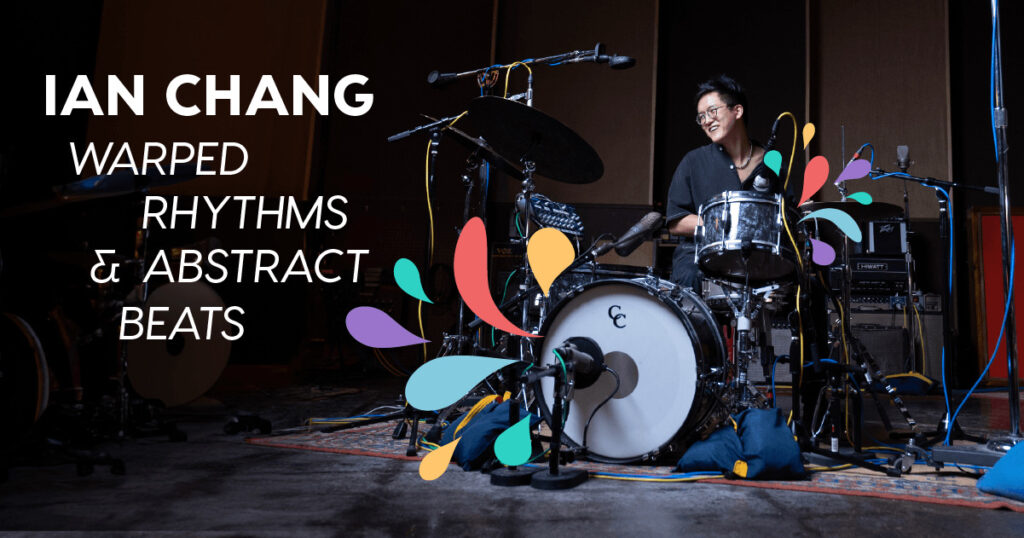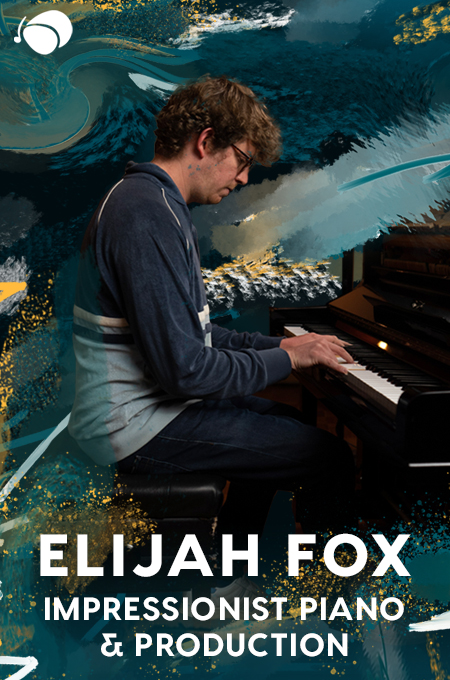+ This exclusive lesson is presented courtesy of Soundfly’s newest course, Ian Chang: Warped Rhythms & Abstract Beats. Sign up and learn to craft compelling beats and daring rhythms with Son Lux’s Ian Chang.
Ian Chang’s journey exploring the boundaries of sound and performance within the drum kit made him a natural fit for the Sunhouse Sensory Percussion technology, even as a beta tester in the early stages of its development.
In Soundfly’s newly launched video from his course, Warped Rhythms & Abstract Beats (seen above), he introduces us to his Sensory Percussion set up and explains a bit about how the tech works, as well as how he works with the tech.

Many drummers have expanded their acoustic drum kits using widely available tools, like the ubiquitous Roland triggers for the Roland SPD-SX drum pads. These triggers register when a particular drum head is played, and trigger the sampler to play a corresponding sound.
That’s a great way to layer samples in with an acoustic drum kit, especially in a live setting. However, it’s pretty much restricted to playing a sample or not playing a sample, with some control over velocity, and not much more than that.

Sunhouse founder Tlacael Esparza (pronounced “T’lock-ay-el“), a drummer himself, created the Sensory Percussion technology out of sheer frustration with the limitations of the drum triggers that were available at the time. He set forth to develop a more expressive and nuanced method for triggering sounds with the drum kit as the source.
While in beta testing, Tlacael approached Ian to give what he had built a try, as Ian was also experimenting with triggers and machines to play samples in live settings.
Ian loved the way the sensors heightened timbral possibilities on the drum kit, which is already an extremely expressive instrument.
While experimenting with these new sensors, Ian very quickly stumbled into immersive new worlds and birthed a fresh creative direction and subsequent solo project, starting with his debut album, Spiritual Leader.
Rather than relying on triggers, Sensory Percussion uses custom sensors and an acoustic mapping of a particular mesh drum head powered by machine learning. This allows it to achieve a much more detailed picture of what and how a drummer performs on that particular drum head.
Ian’s Sensory Percussion setup utilizes mesh heads that are nearly silent, rather than the standard plastic one or two-ply heads used on a typical acoustic drum kit. These mesh heads were originally invented for practicing quietly to avoid complaints from neighbors, well before Sensory Percussion was around.
This setup ensures there is no discernable acoustic sound coming off the kit as Ian performs. Instead, the sound comes entirely from whatever sound sources he chooses to control with the sensors.
+ Learn more on Soundfly: Craft more compelling beats with warped and off-kilter rhythms with a new online course by Ian Chang (of Son Lux).

Sensory Percussion has enabled Ian to think about what it means to “play the drums” in a completely different way than he did before.
- How can the physicality of drumming affect the way a synth sounds?
- What would the snare become if it incorporated ten snare samples all in one drum, spread across ten zones?
- What can a percussive articulation offer an entirely different acoustic sound — like that of a cello?
This new way of thinking about texture and tonal possibilities was a beautiful catalyst into a world of production and composition for Ian, and that journey continues today.
Later in Ian’s course, we take a closer look at how Ian sets up his Sensory Percussion and creatively utilizes the technology. Check it out if you have the time.
Your Sound Is a Spectrum — Own It in Full.
Deepen your learning on Soundfly with creative, contemporary courses on songwriting, mixing, production, composing, synths, beat making, and more by artists like Kiefer, Kimbra, Com Truise, Jlin, Ryan Lott, RJD2, and the brand new Ian Chang: Warped Rhythms & Abstract Beats.



